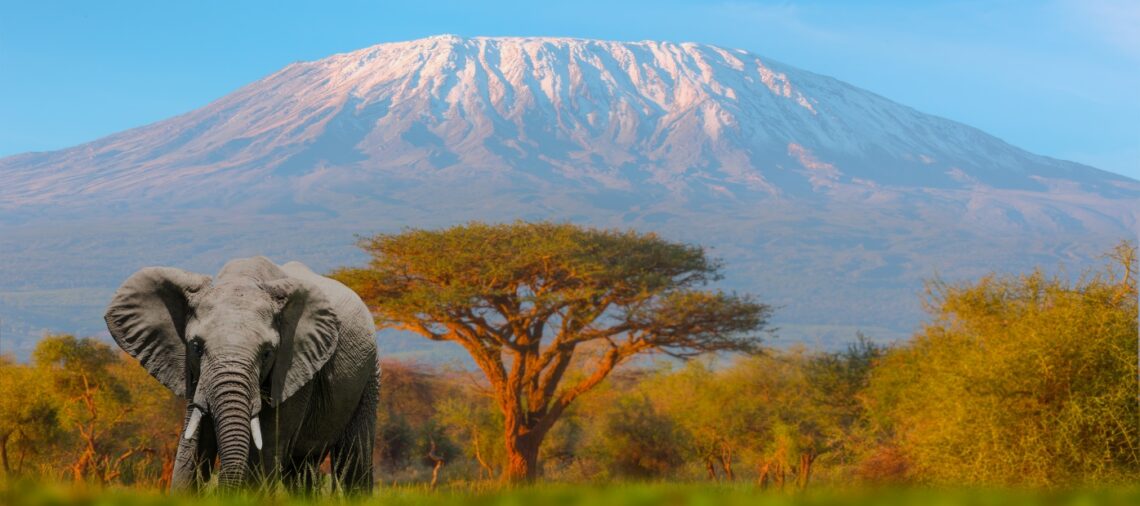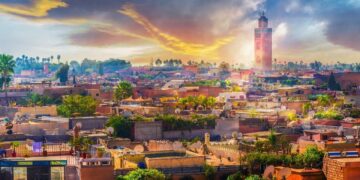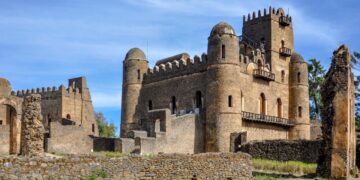Are you ready to embark on the adventure of a lifetime? Picture yourself standing on top of Africa, taking in the awe-inspiring view below. Climbing Kilimanjaro, Africa’s tallest peak, will push your limits and test your resolve. Located in Tanzania, this dormant volcano offers multiple routes to suit climbers of all levels. Imagine the sense of freedom as you conquer the highest mountain on the continent. Get ready to make your dreams come true and experience the exhilaration of climbing Kilimanjaro.
Preparation and Training
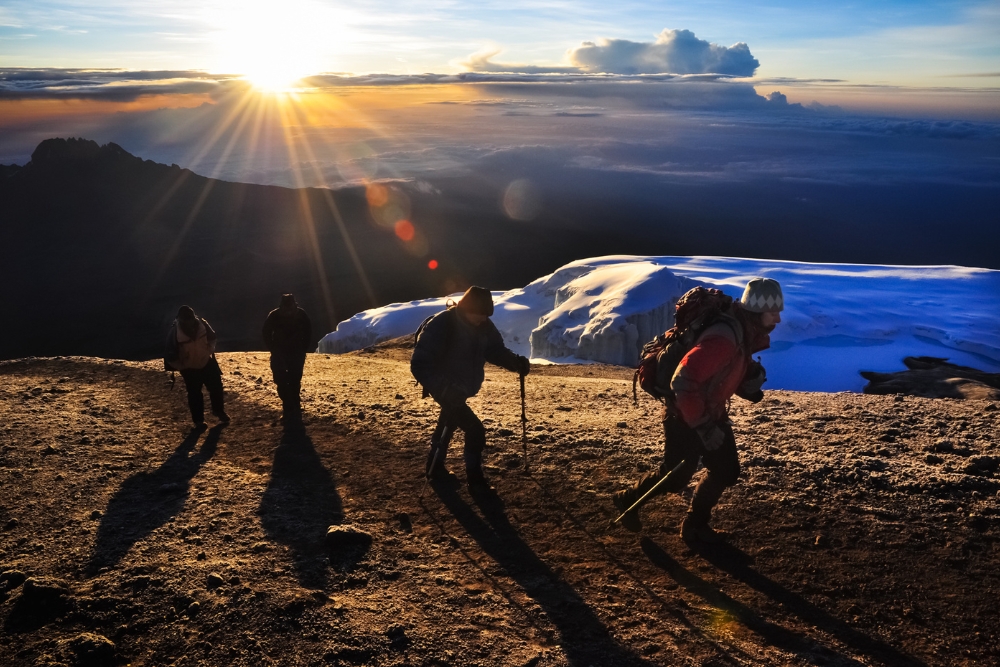
To successfully climb Kilimanjaro, you should focus on physical fitness training and acquiring the necessary equipment.
Climbing Mount Kilimanjaro isn’t an easy feat. It requires mental and physical strength, determination, and preparation. The first step is to ensure that your body is ready for the challenge. Engage in regular exercise, such as hiking, jogging, and strength training, to improve your cardiovascular endurance and muscle strength. This will help you endure the long hours of trekking and cope with the high altitude.
Additionally, it’s crucial to acquire the necessary equipment for the climb. Invest in proper hiking boots, warm clothing, a sleeping bag, a backpack, and other essentials to ensure your comfort and safety during the expedition.
Remember, the altitude of Mount Kilimanjaro is no joke. At a height of 5,895 meters, the air becomes thinner, making it more difficult to breathe. It’s essential to acclimatize properly to avoid altitude sickness. Take your time and choose a route that allows for gradual ascent, giving your body enough time to adjust to the altitude.
Choosing the Right Route
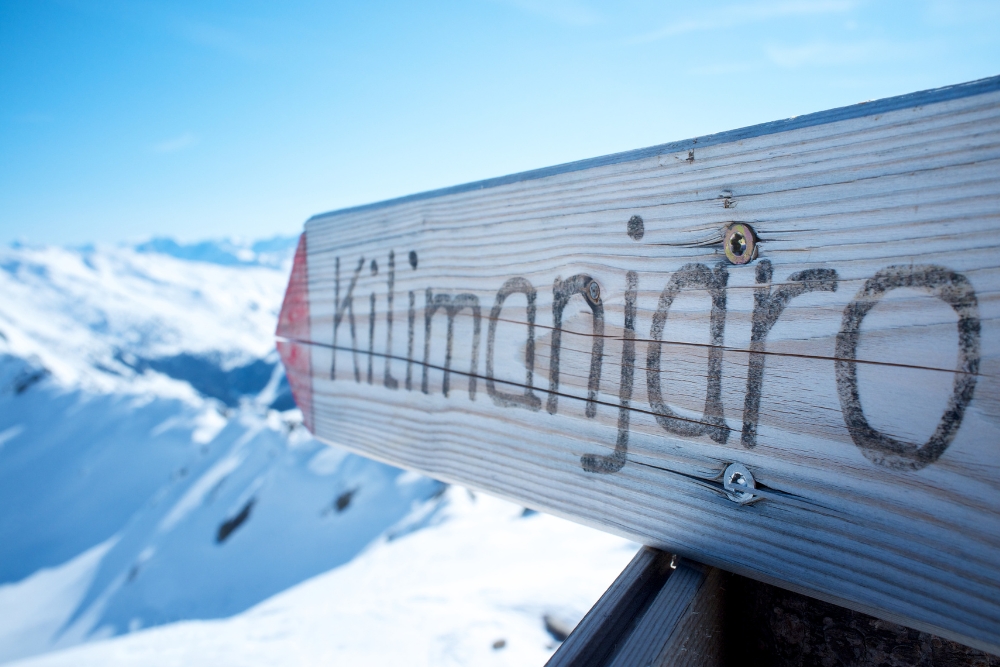
When planning your Kilimanjaro climb, you should consider your preferences and abilities, as well as the length and difficulty of the different routes available. Here are four factors to keep in mind when choosing the right route for your adventure:
- Length: The duration of the climb varies depending on the route you choose. The shortest route is the Marangu route, which can be completed in five days. On the other hand, the longest route is the Lemosho route, which takes nine days to complete. Consider your available time and how comfortable you’re with a longer trek.
- Difficulty: Each route has its own level of difficulty. The Marangu route is considered the easiest, while the Lemosho route is more challenging due to its longer duration and steeper terrain. Take into account your fitness level and previous hiking experience when deciding on a route.
- Scenery: Each route offers unique views and landscapes. From the lush rainforests of the Lemosho route to the lunar-like landscapes of the Machame route, consider the type of scenery you’d like to experience during your climb.
- Crowds: Some routes, like the Marangu route, tend to be more crowded due to their popularity. If you prefer a quieter and more peaceful experience, you may want to consider routes like the Lemosho or Northern Circuit.
Choosing the right route is crucial for a successful and enjoyable Kilimanjaro climb. Once you have decided on your route, it’s important to understand the importance of acclimatization and how to prevent altitude sickness, which we’ll discuss in the next section.
Acclimatization and Altitude Sickness
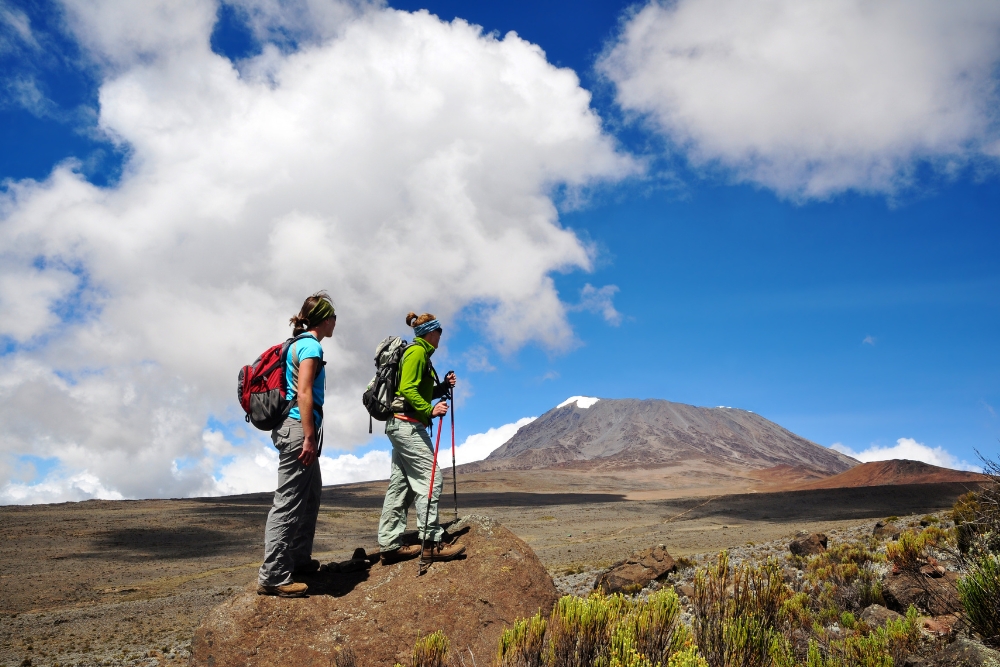
While climbing Kilimanjaro, it is important to prioritize acclimatization and take precautions to prevent altitude sickness. As you ascend to higher altitudes, your body needs time to adjust to the thinning air and decreased oxygen levels. Acclimatization involves gradually increasing your altitude and allowing your body to adapt to the changing conditions. This is crucial in order to minimize the risk of altitude sickness, which can range from mild symptoms like headache and nausea to more severe conditions like high altitude pulmonary edema (HAPE) and high altitude cerebral edema (HACE).
To illustrate the importance of acclimatization, here is a comparison of the different routes up Mount Kilimanjaro, along with their durations and altitudes:
| Route | Duration | Altitude (m) |
|---|---|---|
| Marangu | 5-6 days | 5,895 |
| Machame | 6-7 days | 5,895 |
| Lemosho | 7-8 days | 5,895 |
| Rongai | 6-7 days | 5,895 |
As you can see, all routes take a minimum of 5 days to allow for acclimatization, with the longer routes offering even more time for your body to adjust. It is important to listen to your body and pay attention to any signs of altitude sickness. If you experience symptoms like headache, dizziness, or difficulty breathing, it is crucial to descend to a lower altitude and seek medical attention if necessary. Remember, your safety and well-being should always be the top priority.
Camping and Accommodation on the Mountain
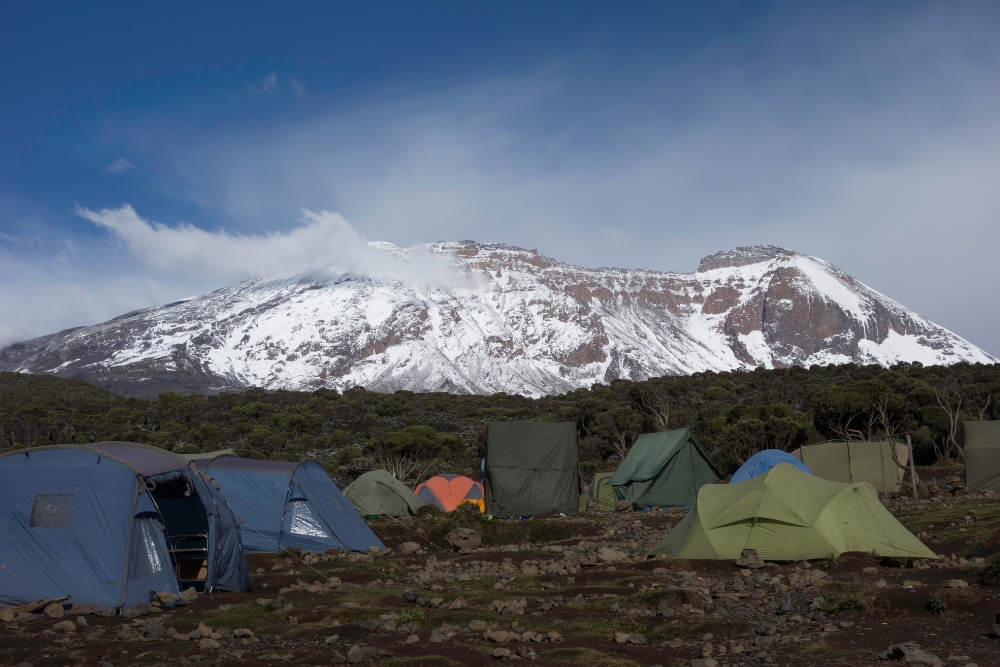
You will need to set up camp and find suitable accommodation on the mountain as you climb Kilimanjaro. Here are four key things to know about camping and accommodation on Mount Kilimanjaro:
- Camping is the norm: Most routes up Kilimanjaro require camping, except for the Marangu route, which offers accommodation in huts. This means you’ll need to bring your own camping gear or hire it from a reputable tour operator.
- Campsites along the routes: There are designated campsites along each route where you can set up your tents. These campsites provide basic facilities such as toilets and sometimes even dining tents. However, keep in mind that the facilities are limited, so it’s important to be prepared and bring your own supplies.
- Sleeping arrangements: You’ll sleep in tents during your climb. It’s essential to have a good quality sleeping bag and a comfortable sleeping mat to ensure a good night’s rest. The temperature on the mountain can drop significantly at night, so be prepared for cold conditions.
- Acclimatization huts: On some routes, there are acclimatization huts at certain altitudes where you can rest and spend the night. These huts provide a more sheltered and comfortable option compared to camping. However, availability is limited, so it’s advisable to book in advance if you prefer this option.
Wildlife Encounters on Kilimanjaro
Although Kilimanjaro is known for its diverse wildlife, it is important to be mindful and respectful of the animals you may encounter during your climb. As you make your way up Africa’s tallest peak, you may have the opportunity to witness some of the unique wildlife that inhabits the mountain. From majestic elephants to playful monkeys, Kilimanjaro is home to a variety of species that add to the awe-inspiring experience of your Mount Kilimanjaro expedition.
To give you a glimpse of the incredible wildlife you may encounter, here is a table highlighting some of the animals you might see during your climb:
| Animal | Description | Encounters |
|---|---|---|
| Elephants | Majestic creatures roaming the lower slopes | Rare sightings |
| Monkeys | Playful and curious companions | Frequently spotted |
| Colobus Monkeys | Black and white primates swinging through trees | Commonly seen |
| Buffalos | Mighty beasts grazing on the mountain | Occasionally encountered |
| Hyraxes | Small, furry mammals basking in the sun | Easily spotted |
| Birds | Colorful feathered friends soaring above | Abundant and diverse |
As you venture through the varying ecosystems of Kilimanjaro, keep in mind the importance of maintaining a safe distance from the wildlife. While these encounters can be exhilarating, it is crucial to respect their natural habitat and observe them from a respectful distance. Remember, you are a guest in their home.
Whether you choose to climb Kilimanjaro on a budget or opt for a luxurious experience, the wildlife encounters will undoubtedly add a touch of magic to your journey. So, as you embark on this extraordinary adventure, cherish these moments with the incredible creatures that call Kilimanjaro their home.
Summit Night: A Test of Endurance
As you ascend Mount Kilimanjaro, summit night proves to be a test of endurance. It’s a grueling and challenging experience that will push you to your limits. Here are four things you can expect during this ultimate test of strength and determination:
- Darkness: As you embark on your summit night climb, you’ll be surrounded by darkness. The only light will come from your headlamp, illuminating the path ahead. The darkness adds an element of mystery and excitement to the climb, but also heightens the challenge.
- Steep Incline: The path becomes steeper as you approach the summit. Each step requires immense effort as you navigate the rocky terrain. Your legs will feel heavy, and your breathing will become labored. But remember, with every step you take, you’re one step closer to the top.
- Extreme Cold: As you climb higher, temperatures drop significantly. The biting cold can be relentless, numbing your fingers and toes. Layer up and stay warm to combat the freezing conditions. The cold may be harsh, but it adds to the sense of adventure and accomplishment.
- Mental Fatigue: Summit night is a true test of mental fortitude. The combination of physical exhaustion and the daunting task of reaching the summit can be overwhelming. Stay focused, stay positive, and keep pushing forward. Remember why you started this journey in the first place.
As you conquer summit night and reach Uhuru Peak, the highest point of Mount Kilimanjaro, you’ll feel an overwhelming sense of joy and accomplishment. The trials and tribulations of the climb will fade away as you celebrate your success.
The next section will explore the importance of reflecting on this incredible achievement.
Celebrating Success: Reflections on Reaching Uhuru Peak
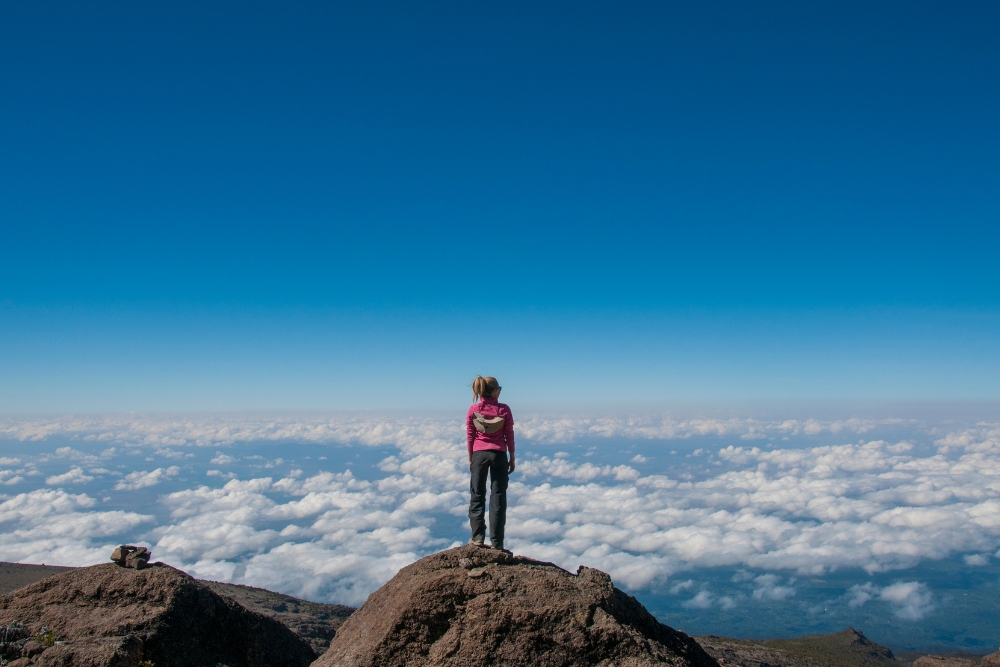
Reaching Uhuru Peak is a moment of triumph and reflection, as you celebrate your success on Mount Kilimanjaro. Standing at the highest point in Africa, you can’t help but feel a sense of accomplishment and awe at the vastness of the landscape spread out before you. The journey to reach this summit has been arduous, testing your physical and mental limits, but the rewards are immeasurable.
As you stand on Uhuru Peak, you can’t help but reflect on the challenges you’ve overcome. The steep ascents, the freezing temperatures, the thin air – all of it has pushed you to your limits. But you’ve persevered, taking one step at a time, fueled by your determination and willpower. You’ve proven to yourself that you’re capable of achieving great things, of conquering the seemingly insurmountable.
In this moment of celebration, you’re reminded of the freedom that comes from pushing beyond your comfort zone. You’ve embraced the unknown, embraced the adventure, and now you’re reaping the rewards. The view from Uhuru Peak isn’t just a physical one, but a metaphorical one as well. It symbolizes the heights you can reach when you have the courage to dream big and the perseverance to make those dreams a reality.
As you descend from the summit, you carry with you a sense of accomplishment that will stay with you forever. The experience of reaching Uhuru Peak isn’t just about standing on the highest point in Africa, but about the personal growth and transformation that comes from pushing yourself beyond your limits. It’s a testament to your strength, resilience, and the power of the human spirit.
Frequently Asked Questions about climbing Mount Kilimanjaro
What Are the Visa Requirements for Climbing Kilimanjaro?
To climb Kilimanjaro, you’ll need a visa to enter Tanzania. The visa requirements include a valid passport, completed application form, proof of accommodation, and a return ticket. Make sure to check the latest visa regulations before your trip.
Are There Any Age Restrictions for Climbing Kilimanjaro?
There are no age restrictions for climbing Kilimanjaro. People of various ages, from children over 10 to older generations in their 60s and 70s, have successfully summited the mountain.
How Much Does It Cost to Climb Kilimanjaro?
Climbing Kilimanjaro can cost anywhere from £1500 to £4500, depending on factors like park fees and guide fees. It’s important to choose a reputable tour operator and prepare physically and mentally for the challenge.
What Are the Options for Renting Equipment for the Trek?
You have several options for renting equipment for your Kilimanjaro trek. Many reputable tour operators offer equipment rental services, ensuring you have the necessary gear without the hassle of buying and carrying it yourself.
Is It Possible to Climb Kilimanjaro Without a Guide?
Yes, it is possible to climb Kilimanjaro without a guide, but it is highly discouraged. Guides are highly skilled professionals who ensure your safety and increase your chances of reaching the summit successfully.
Conclusion
As you descend from the peak of Kilimanjaro, a sense of accomplishment floods your soul. With each step, you leave behind not just the physical challenges you overcame, but also the doubts and fears that held you back.
Standing atop Africa’s tallest peak, you have proven to yourself that you’re capable of achieving greatness. The journey may have tested your limits, but it has also shown you the boundless strength within.
Embrace this triumph and let it fuel your future adventures.
Photos: Canva Pro
You may also like: 10 must-visit tourist attractions in Rwanda. Is Rwanda safe to visit?

